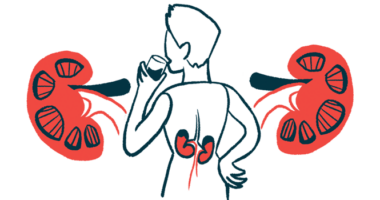Pregnancy triggers aHUS with lung issues in woman: Case report
Patient in Mexico required hemodialysis due to significant kidney damage

The case of a 29-year-old woman who developed pregnancy-associated atypical hemolytic uremic syndrome (aHUS) along with uncommon lung complications after giving birth by cesarean section was reported in Mexico.
Despite in-hospital complications, initial management that included corticosteroids yielded favorable results, although the woman still had significant kidney damage requiring hemodialysis, a procedure to remove extra fluid and waste when kidneys fail, according to researchers.
“The case presented herein highlights the rapid clinical progression of this condition, emphasizing the importance of diagnostic suspicion to reduce mortality and improve prognosis,” they wrote. The study, “Atypical hemolytic uremic syndrome associated with pregnancy: A case report,” was published in Medicine International.
Pregnancy may act as a trigger for aHUS
Abnormal activity of the complement cascade, a part of the immune system, causes aHUS. This activity leads to the formation of blood clots in small vessels, which is known as thrombotic microangiopathy. The disease is characterized by such symptoms as red blood cell destruction (hemolysis), low levels of platelets that normally help with clotting, and acute kidney failure.
Pregnancy may act as a trigger for aHUS, although there is often a genetic predisposition.
The study describes a woman who had given birth by cesarean section four days earlier, during which she had significant bleeding. She presented to the emergency department with fever, purulent (thick, milky) discharge from the vaginal and surgical sites, and urinary symptoms. She also reported fatigue, generalized weakness, pallor, and shortness of breath.
Laboratory tests revealed anemia, or low levels of hemoglobin, the protein that carries oxygen in red blood cells, as well as signs of acute kidney injury. The woman also had an abnormal presence of leukocytes in the urine and granular casts, which can indicate kidney injury. Leukocytes are a type of white blood cell.
She started on intravenous, or into the vein, antibiotics and blood transfusions, and was transferred to a specialized hospital for further management. Once there, other indicators of kidney injury were detected, including low urinary production and increased blood levels of nitrogen products and of potassium.
Lung issues likely delayed start of targeted therapy
The woman was transferred to the intensive care unit for hemodialysis. She was at first suspected of having tissue damage in the kidneys associated with reduced blood supply resulting from her cesarean section bleeding.
Despite antibiotics, the patient developed respiratory symptoms requiring ventilation. With blood tests showing low platelet counts, persistent anemia, and hemolysis, the researchers suspected thrombotic microangiopathy. They then found that her complement proteins were within normal levels and that she didn’t have autoimmune antibodies, ruling out thrombotic thrombocytopenic purpura.
“The constellation of findings, postpartum anemia, thrombocytopenia, acute kidney injury, normal ADAMTS13 activity, and confirmation of thrombotic microangiopathy on kidney biopsy, strongly supports the diagnosis of pregnancy-associated aHUS, effectively distinguishing it from other differential diagnoses,” the researchers wrote. A deficiency in the ADAMTS13 enzyme is characteristic of thrombotic thrombocytopenic purpura.
The woman began treatment with corticosteroids and received fresh frozen plasma infusions.
The constellation of findings, postpartum anemia, thrombocytopenia, acute kidney injury, normal ADAMTS13 activity, and confirmation of thrombotic microangiopathy on kidney biopsy, strongly supports the diagnosis of pregnancy-associated aHUS, effectively distinguishing it from other differential diagnoses.
Further complications included coughing up blood and bleeding in the lungs’ tiny air sacs. The woman again needed intubation to help with breathing for 10 days, and later developed ventilator-associated pneumonia, a type of lung infection and inflammation. Following improvement, she was discharged, though she received intermittent hemodialysis and was monitored.
The additional lung complications of bleeding and infection “likely delayed the initiation of targeted therapy, particularly complement blockade, and may have contributed to the persistence of dialysis-dependent renal failure,” according to the researchers.
This contrasts with “published cases where earlier intervention was associated with improved [blood parameters] recovery and, in certain instances, partial renal recovery.”








